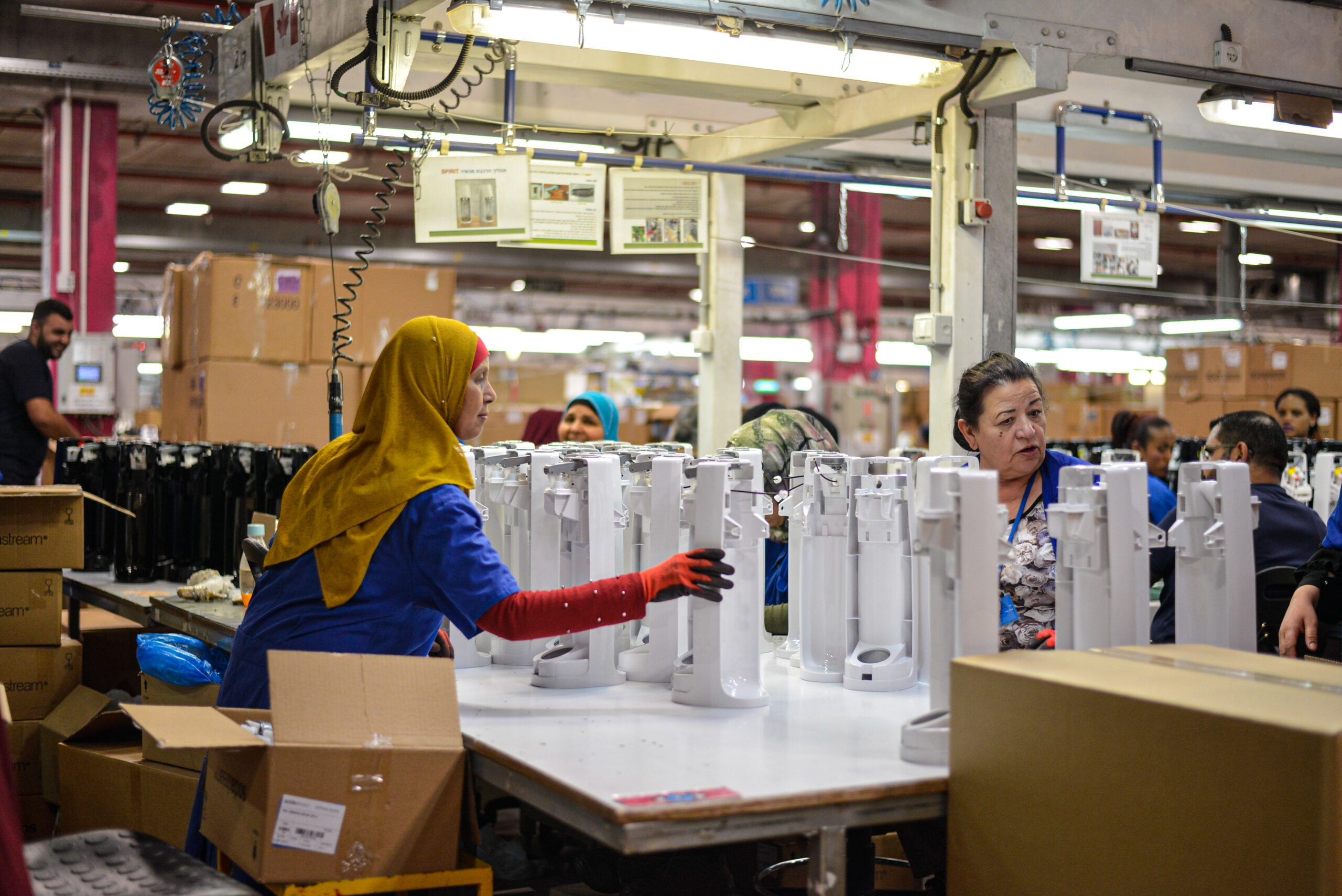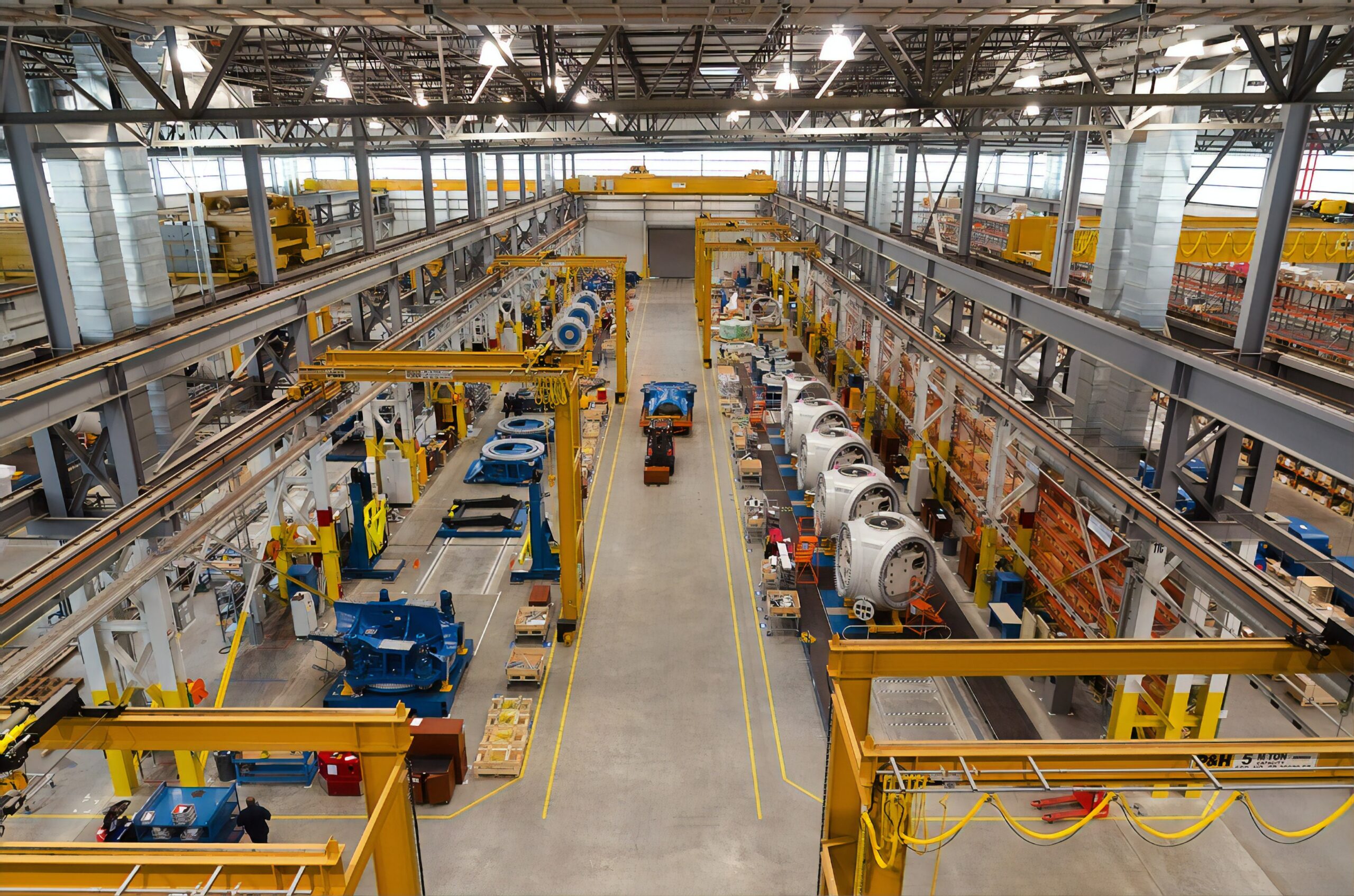From Atoms to Pixels: Digital Product and Manufacturing
Written by Jason Scherschligt
This is the fifth in our series of posts on The Product Mindset. See the first post in the series here: The Product Mindset.
At first glance, software companies and manufacturing companies seem diametrically opposed: pixels vs atoms, machine learning vs. machines, bits and bytes vs. nuts and bolts.
Modern product management nerds like me spend a lot of time with companies and teams whose primary output is digital, comprising data and experiences that use computing technology and software engineering techniques to enable users to interact through websites, installed software, or mobile apps. It’s a discipline combining the best parts of user experience design, marketing, business strategy, and software development and delivery.
Meanwhile, manufacturers of physical products are engaged in their own professional domains — and, by the way, manufacturing contributes about 2.3 trillion dollars to the US GDP each year. These businesses have deep expertise in materials, chemistry, physics, manufacturability, supply chains, operations, safety, and logistics, things many digital product companies aren’t particularly concerned with. At first glance, these manufacturers might not seem too concerned with the processes of UX design and agile software development
But that’s at first glance.
A False Binary
Take another look, and you realize that this binary division between software and manufacturing companies, like so many binary divisions (IT vs. the business, STEM vs. the humanities, rock n’ roll vs. country) is false. It obscures and limits rather than clarifies and enhances.
The truth is the modern manufacturing company is, in many cases, an honest to goodness software company too, just as much as the hottest consumer internet brand. These manufacturing companies use software throughout their businesses, both for internal operations and for interacting with customers through marketing, commerce, service, configuration, and distribution.
The archetypical lifecycle of such a company looks like this. They started many years ago, became successful at building and selling physical products in a specific market (dog food, brake pads, microwave ovens), and perhaps expanded into adjacent markets. At some point, perhaps in the 1970s or 80s, they started using software internally to manage operations and facilitate decision making. Finally, perhaps relatively recently, they turned that software outward, using the Web and mobile apps to satisfy and delight customers. And so now, they are both a manufacturing company and a software company — even if in some cases, they don’t even realize it. This is what Marc Andreesen meant when he said, famously, “software is eating the world.”
Here’s an example: A few years ago, I led digital product and UX for a venerable provider of yearbooks, class rings, and other manufactured products for celebrating scholastic achievements. That company has outstanding manufacturing facilities and processes. They operate huge plants where they print millions upon millions of yearbook pages. At other facilities they use sophisticated custom engineering and precision manufacturing to make one-of-a-kind pieces of commemorative jewelry.
But we also designed and built some interesting and impressive digital experiences that were part of the product experience. High school yearbook editors, designers, and photographers used our custom-built web-based publishing tools and mobile apps to collect memories of a school year and to design great pages and book covers. That one-of-a-kind ring that commemorates a student’s school experience or championship crown? It was designed through an app, rendered in 3D, purchased through e-commerce and shared on social media before it ever became a physical object. And that software is a product provided by this company as much as the ring itself is.
So is that company a manufacturing company? Yes, absolutely.
Is it a software company? Yes, absolutely.

The truth is the modern manufacturing company is, in many cases, an honest to goodness software company too, just as much as the hottest consumer internet brand.

Tips for manufacturers adopting a digital product mindset
Because a manufacturing company is a software company, too, it stands to reason that the manufacturing company that wants to differentiate can do so by strengthening its digital product capabilities. If you’re a manufacturer interested in adopting the techniques, teams, and processes of consumer Web-based technology, consider the following:
- Start with the story of your customers. Think creatively and expansively about their needs. Then, focus on meeting their needs through a combination of digital and physical interventions. Say you manufacture dog food. Dog food customers don’t just need tasty kibble to fill their pooches’ bowls; they need to care for their dogs’ nutritional needs. You, a dog food maker, might find opportunities to win new customers and surpass your competition if you can uncover software-enabled ways to address these needs. In addition to providing food, can you also help with feeding schedules, hunger alerts (app name: Pavlov!), delivery of heavy bags, analysis of pet health?
- Introduce your manufacturing and software teams to each other. One easy tip: make sure your software teams and your manufacturing teams get to know each other. They’ll learn a lot from each other, and both teams’ work will improve. In addition to getting out of the building (“GOOBing”) to spend time with customers, your software product teams should pay a visit to your manufacturing facilities, too.
- Focus on iterative discovery before concerning yourself with efficiency and scale. Manufacturing operations pros are excellent at designing processes to efficiently produce high-quality goods at scale. But if you are developing digital products, you should experiment and validate (and possibly disregard or change course) before you try to scale up a new product or process. Steve Blank, a software startup guru, says that the greatest risk to a tech business is premature scaling. That’s true for manufacturing companies developing their software product expertise, too. Instead, squeeze out inefficiencies after you’ve achieved product-market fit.
- Understand where software and physical products differ. One example: in software, a small but meaningful error in text can be repaired with just a few keystrokes and a push to production. But if that same error is included in, say, printed packaging, the cost of correcting it after the fact can be substantial. Investment in QA processes could therefore vary widely between software and manufacturing teams. Other areas where manufacturing models and software models differ significantly: mass customization, globalization, distribution, and upgrades and improvements.
- Consider new business models. Could a lawnmower company include subscriptions to insights about grass cutting? Could a birdfeeder-maker pair with advertising driven content about our feathered friends? Subscriptions, advertising, upsells, personalization, premium memberships, e-learning: these are just some of the core models of technology product firms. They could apply to you, too.
- Hire and organize staff with the specialized skillsets of software products. As they build their software product capabilities, manufacturers may need user experience designers, data scientists, software developers, content writers and producers, and digital product managers. Depending on your organizational dynamics, consider separating your digital product function from the IT function, to give your digital product leaders their own seat at the leadership table. Or think of it this way: Google has a world-class IT department, but its IT department doesn’t build Google’s software products (search, maps, docs, etc.) Similarly, in many cases a manufacturer’s software products may be best handled by a dedicated product function outside the IT department.
- Manage your digital initiatives with product measurements. You may be inclined to think that your physical goods are your products, while the digital stuff is another IT project, much like your ERP upgrade or the new email server. These projects’ success is typically measured by delivery dates, resources, and budgets. These are important, but they’re internal metrics. Your product makers and leaders need to be concerned with business metrics: customer acquisition, retention, satisfaction, competitive differentiation.
- Adopt a product mindset for your software. With our customers, we use the term product mindset as our shorthand for the set of attitudes, beliefs, tools, and processes that produce great products. The essential elements of this mindset: Listen to your users. Delight through experience. Deliver often, even relentlessly. Shift requirements as you learn more. Adapt and learn, rather than gate and stage. Recognize that while successful projects end, successful products endure.
Manufacturers aren’t going anywhere. As long as humans live in a world where physical goods contribute to our comfort, well-being, mobility, and economic viability, we’ll always use and appreciate things that are made. But the line between the virtual and the physical, the pixels and the atoms is getting blurrier every day. If you’re a manufacturing company, remember that you’re probably also a software company. So you might as well start acting like one.

Image Credits:
Industrial Drill photo by Greg Rosenke on Unsplash
Women working in manufacturing facility photo by Remy Gieling on Unsplash
Wind Turbine plant photo by Science in HD on Unsplash
